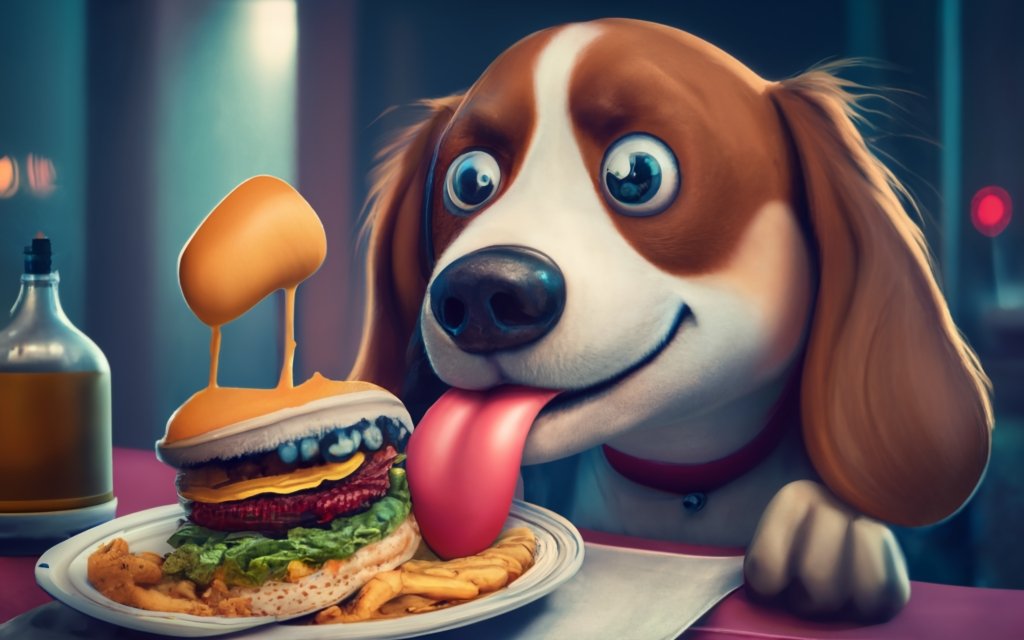Table of Contents
What is a chicken meal in dog food?
In the realm of dog food formulas, an ingredient that reigns supreme is the enigmatic chicken meal. Through a process of scorching heat, this poultry undergoes a metamorphosis, shedding its moisture and fat to emerge as a concentrated bastion of protein. This alchemical transformation not only preserves the chicken’s nutritional essence but also extends the lifespan of the canine sustenance.
What distinguishes chicken meal from mere ordinary fowl lies in its composition devoid of bones, feathers, or any non-meat matter. Such purity renders it an eminently digestible and nourishing wellspring of protein for our four-legged companions. Bursting with indispensable amino acids, this culinary concoction fuels muscular growth and contributes to a lustrous coat befitting their regal stature. Moreover, it imparts an array of vital vitamins and minerals that holistically bolster the hound’s overall welfare.

How many cups in a pound of dog food?
For pet owners seeking to accurately portion their beloved companions’ daily sustenance, grasping the enigmatic conundrum of how many cups reside within a solitary pound of dog food is absolutely paramount. The intricate dance between cups and pounds can be capricious and unpredictable, contingent upon the composition and texture of the canine victuals at hand. Consequently, comprehending the fundamental guidelines becomes indispensable in order to maintain an equable nutritional intake for one’s cherished four-legged confidant.
Indeed, when it comes to this perplexing realm known as dog food, discerning the precise number of cups nestled within a single pound proves elusive due to an assortment of variables: from densities akin to ethereal whispers that permeate its ingredients, all the way down to minuscule kibbles that defy easy quantification through mere mortal means.
As a rudimentary principle governed by ambiguity itself, it is generally accepted that each pound of dehydrated canine comestibles accounts for approximately four generous cups. Nonetheless, one must exercise caution in regarding this measurement as naught but an approximation; consulting diligently with specific feeding instructions proffered by esteemed purveyors is always advised.
Furthermore, bear in mind that moist or succulent dog fare boasts a divergent consistency and heftiness altogether – thus ushering forth subtle disparities in cup-to-pound ratios previously unfathomable – adding yet another layer of bewilderment into this labyrinthine tapestry woven by culinary curiosities

Is nature’s recipe a good dog food?
Nature’s Recipe is a highly regarded brand in the pet food industry, known for providing high-quality and nutritious food for dogs. The question that arises is whether Nature’s Recipe is a good dog food choice for pet owners. When considering the quality of dog food,
it is essential to assess the ingredients, nutritional value, and the brand’s reputation. Nature’s Recipe meets these criteria, making it a promising option for dog owners who prioritize their pets’ health and well-being.
One significant aspect of Nature’s Recipe that makes it a reliable choice for dog owners is the ingredients used in their products. The brand ensures that its dog food formulas include wholesome ingredients, such as real meat, vegetables, and whole grains.
This commitment to using natural and nutritious ingredients is vital for maintaining a balanced diet for dogs. Additionally, Nature’s Recipe avoids the use of artificial preservatives, colors, or flavors, ensuring that the food is free from unnecessary additives that could potentially harm dogs.
Overall, Nature’s Recipe’s dedication to providing quality ingredients makes it a dependable option for those seeking a good dog food brand.
Can dogs eat hot food?

Have you ever pondered the safety of allowing your furry friend to indulge in hot, steaming food that delights your own taste buds? The enigma surrounding whether dogs can partake in hot meals frequently troubles pet owners.
Dogs possess a remarkable olfactory sense and are known for their ability to endure higher temperatures; however, it is imperative to exercise caution when serving them sizzling dishes.
Serving food at elevated temperatures poses a perplexing threat as it may scorch the delicate tissues present within a dog’s mouth and throat. Moreover, certain components found in spicy seasonings or oils utilized in hot foods can instigate digestive issues and discomfort for our canine companions.
While dogs do exhibit tolerance towards slightly warm sustenance, ensuring its temperature is cooled down to a safe and pleasurable level before serving becomes paramount. It is therefore advisable to allow hot victuals adequate time to cool down either naturally or through slight tepidity so as not to inflict any potential harm upon your cherished companion.

Is food coloring safe for dogs?
The use of food coloring in human food products is widespread, but when it comes to our furry companions, pet owners may find themselves perplexed by the potential risks. While some food colorings are deemed safe for us to consume, the same cannot be said for dogs.
Bursting with artificial dyes, many of these colorings can pose a threat to our four-legged friends and elicit a range of adverse reactions. It is therefore imperative that pet owners approach any food product containing such coloring with caution and consider the potential hazards before offering it to their beloved canines.
A primary concern lies in the presence of artificial dyes within dog-safe foods. These dyes often consist of chemicals that have the capacity to negatively impact a dog’s well-being. Allergic reactions, gastrointestinal distress, and even behavioral changes have been linked to certain artificial food colorings in dogs.
Moreover, specific types of colorings that encompass red hues have proven more problematic than others as they tend to provoke allergies and hyperactivity among canines. Consequently, responsible pet owners must immerse themselves in ingredient labels and seek professional guidance from veterinarians to ascertain whether a particular food coloring is suitable for their canine companion’s consumption.











2 thoughts on “What is a chicken meal in dog food?”